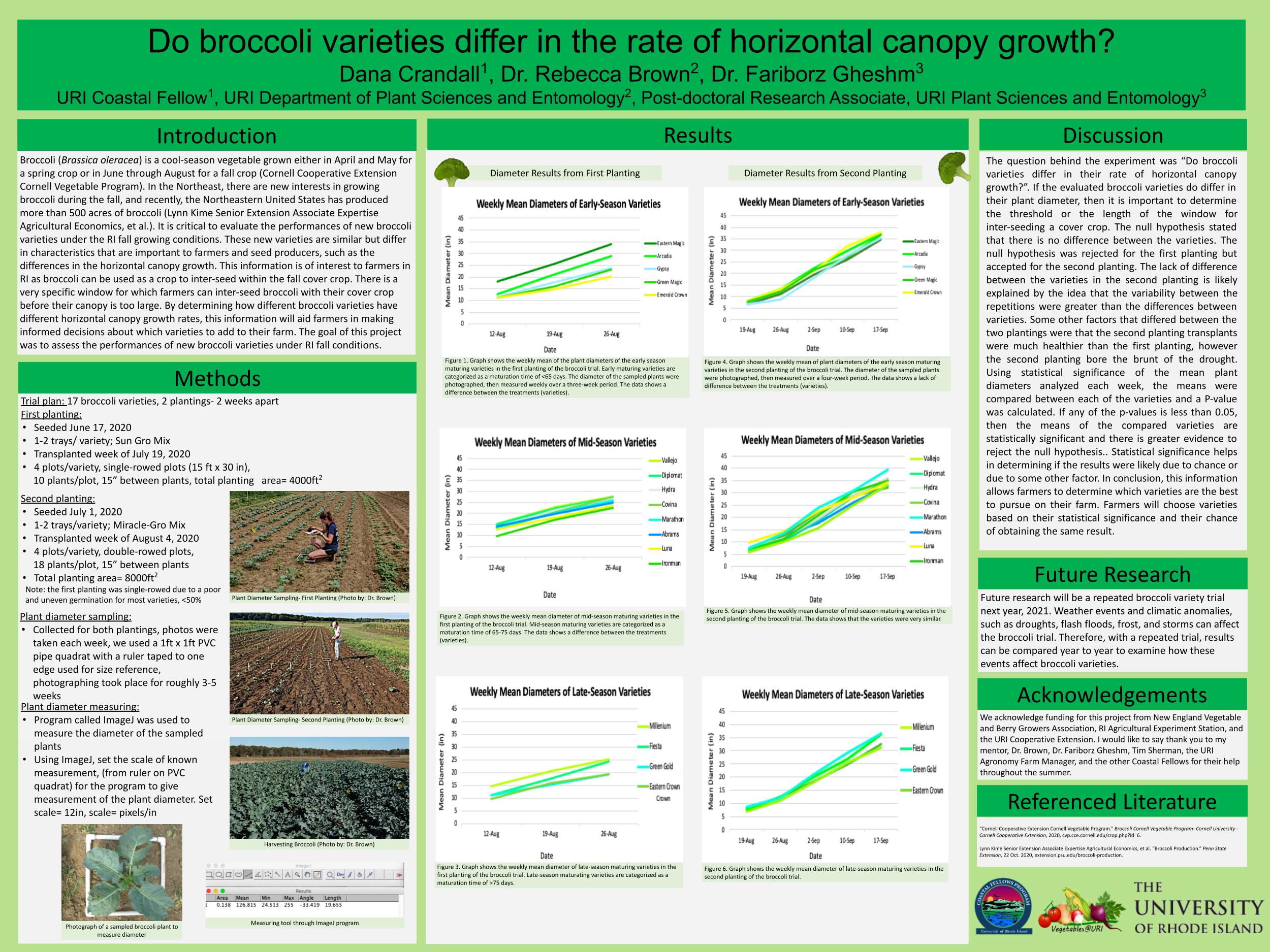Do broccoli varieties differ in the rate of horizontal canopy growth?
Abstract:
Broccoli (Brassica oleracea) is a popular cool-weather vegetable grown throughout the United States. There are new interests, particularly in the Northeast where broccoli can be inter-seeded with an annual cover crop. Farmers may need to know the specific window for when particular broccoli varieties can be inter-seeded before the canopy is too large. The goal of this project was to access the horizontal canopy growth rate of new broccoli varieties under RI fall conditions. The trial plan included two planting dates of seventeen broccoli varieties, seeded and transplanted two weeks apart. Photos were taken each week over a 3-5-week period, then the diameter was digitally measured using a program called ImageJ. Through statistical analysis of repeated measures of ANOVA and a confidence interval of 95% shows that in the first planting, the mean horizontal canopy growth rates differed, however in the second planting, there were little to no differences. This can be explained by the fact that the second planting transplants experienced the brunt of the drought and took longer to irrigate. Using the confidence interval of 95%, a p-value of 0.05% was compared between each of the varieties to determine if the results were likely due to chance or some other factor. This information will allow farmers to make informed decisions about choosing particular broccoli varieties and successfully timing the inter-seeding window into their cover crops.
 Home
Home Browse
Browse Close
Close Events
Events Maps
Maps Email
Email Brightspace
Brightspace eCampus
eCampus




